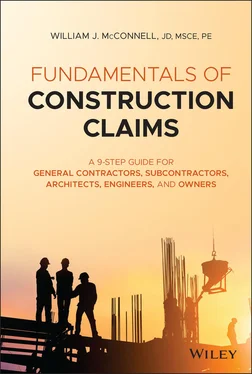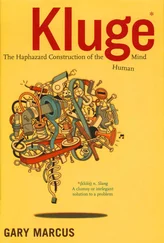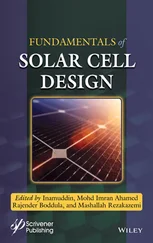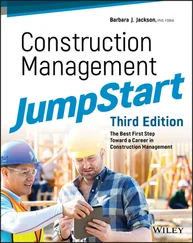EJCDC is a joint venture of three major organizations of professional engineers: (1) the American Council of Engineering Companies; (2) the National Society of Professional Engineers; and (3) the American Society of Civil Engineers. Most EJCDC stipulated sum and cost-plus-fee contract forms incorporate EJCDC's C-700 general conditions, which set forth dispute resolution provisions within Article 10, “Changes in the Work; Claims,” and Article 16, “Dispute Resolution.” The process is summarized as follows:
If the contractor or owner has a dispute that involves time and/or money, the claimant shall issue written notice to the engineer within 30 days after the start of the event giving rise to the claim.
The claimant shall provide the engineer with supporting cost and/or time data within 60 days after the start of the claim event.
The respondent shall submit a response to the engineer within 30 days after receipt of the claimant's last submittal.
Within 30 days of the respondent's last submittal, the engineer will either approve the claim, deny the claim, or advise the parties it cannot resolve the claim.
Either party can invoke the dispute resolution procedure within 30 days of the engineer's decision. Failure to do so within this 30-day period renders the engineer's decision final and binding.
The owner or contractor can request mediation of a claim issue to the engineer for a decision before it becomes final and binding. The parties shall conduct mediation within 60 days of filing.
Within 30 days of an unsuccessful mediation, the contractor can trigger binding dispute resolution.
The claim is resolved via binding dispute resolution.
D. Proprietary Contract Dispute Resolution Provisions for Owner–Contractor Agreements
Proprietary contract forms are used by thousands of public and private owners so it is not possible to review the dispute resolution provisions for each proprietary contract form; however, it is possible to review the dispute resolution procedures that apply to federal construction contracts as well as a typical state contract, in order for the reader to get a feel for the typical requirements.
1. Federal Projects Dispute Resolution Provisions for Owner–Contractor Disputes
The US Federal Government procures and administers construction contracts according to the Federal Acquisition Regulation (FAR). FAR Regulation Part 33, Subpart 33.2, “Disputes and Appeals,” outlines the dispute resolution procedures for federal construction contracts. Section 33.202, “Disputes” notes that 41 U.S.C. chapter 71, “Disputes,” establishes procedures and requirements for asserting and resolving claims.
A contractor shall submit claims against the Federal Government to the contracting officer for a decision. For claims of more than $100,000, the contractor shall certify that the claim is made in good faith, the supporting data are accurate and complete to the best of the contractor's knowledge and belief, the amount requested accurately reflects the contract adjustment for which the contractor believes the Federal Government is liable, and the certifier is authorized to certify the claim on behalf of the contractor.
The contracting officer shall issue a decision in writing to the contractor. For claims less than $100,000, the contracting officer shall issue a decision within 60 days. For claims over $100,000, the contracting officer shall issue a decision within 60 days or notify the contractor when the decision will be issued.
A contractor can appeal a contracting officer's decision to an Agency Board 4 within 90 days of receipt of the decision or bring an action on the claim in the US Court of Federal Claims within 12 months of receipt of the decision.
A contractor may appeal Agency Board or US Court of Federal Claims decisions to the US Court of Appeals for the Federal Circuit within 120 days from the date the contractor receives a copy of the decision.
2. Example State Agency Contract Dispute Resolution Provisions for Owner–Contractor Disputes
Dispute resolution provisions for state construction contracts vary by state and by state agency. The following example is the dispute resolution provisions that the Colorado Department of Transportation prescribes in its standard construction contracts.
Colorado Department of Transportation––2019 Standard Specifications for Road and Bridge ConstructionCDOT's “Standard Specifications for Road and Bridge Construction” include exhaustive provisions for non-binding dispute resolution. This non-binding process can take more than a year before a contractor can trigger binding dispute resolution. The process is outlined as follows:
Contractor to bring dispute issue to CDOT's Project Engineer's attention within 20 days of Contractor being aware of the issue.
If this discussion results in an impasse, Contractor issues a notice of dispute to CDOT's Project Engineer within 15 days of the impasse.
Contractor provides Request for Equitable Adjustment (REA) to the CDOT's Project Engineer within 15 days of the notice of dispute.
Contractor and the CDOT's Project Engineer discuss merits of dispute within 7 days of the REA submission.
CDOT's Project Engineer reviews the REA within 7 days of the discussion.
Contractor rejects the CDOT's Project Engineer's denial and notices the CDOT's Resident Engineer within 7 days of the Project Engineer's rejection.
Contractor's project and executive team meet with the CDOT's Project Engineer and the Resident Engineer to discuss within 30 days of notice.
If impasse, the CDOT's Project Engineer initiates Dispute Resolution Board (DRB) process within 30 or 45 days of this group meeting, depending on type of DRB.
Contractor to sign the DRB agreement within 20 days.
Contractor and the CDOT issue pre-hearing submittals to DRB within 15 days of the signing of the agreement.
DRB, the Contractor, and the CDOT to conduct hearing within 30 days of the submittal issuance.
DRB renders a “recommendation” within 10 days of the hearing.
Parties can issue request for clarification/reconsideration of recommendation within 14 days of the DRB's recommendation.
Either party can reject the DRB's recommendation within 30 days.
Claimant to issue notice of intent to file “claim” to the Region Transportation Director within 60 days of the DRB's recommendation.
Contractor submits claim package to the Region Transportation Director within 60 days of notice.
Region Transportation Director renders a decision within 30 days of receipt of the claims package.
Contractor can reject the Region Transportation Director's decision and issue an appeal to the CDOT's Chief Engineer within 60 days of the Region Transportation Director's decision.
CDOT's Chief Engineer shall render its decision within 45 days of the appeal.
Contractor can reject the CDOT's Chief Engineer's decision and trigger binding dispute resolution within 180 days of the Chief Engineer's decision.
The claim is resolved via binding dispute resolution.
II. Standard Contract Forms for Contractor–Subcontractor Agreements
The following is a list of dispute resolution provisions for the three most commonly used standard contract forms for contractor–subcontractor agreements. Note that each form allows the parties to edit the contract before execution, so it is important to review the exact dispute resolution provisions within the subject contract.
A. AIA A401, Article 6, Claims and Disputes
The AIA Document A401 – 2017, “Standard Form of Agreement Between Contractor and Subcontractor,” is the AIA's most commonly used form of agreement between a contractor and a subcontractor. Article 6, “Claims and Disputes,” of the A401 offers the following dispute resolution procedures:
Читать дальше












